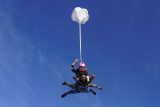The Evolution of Skydiving: History and Technological Advances
General
Posted by: James La Barrie
1 year ago
Skydiving has a deep-rooted history that dates back centuries ago. From the early days of parachuting experiments and ideals to the sophisticated sport it is today, skydiving has undergone significant evolution in terms of technology, safety standards, and overall popularity.
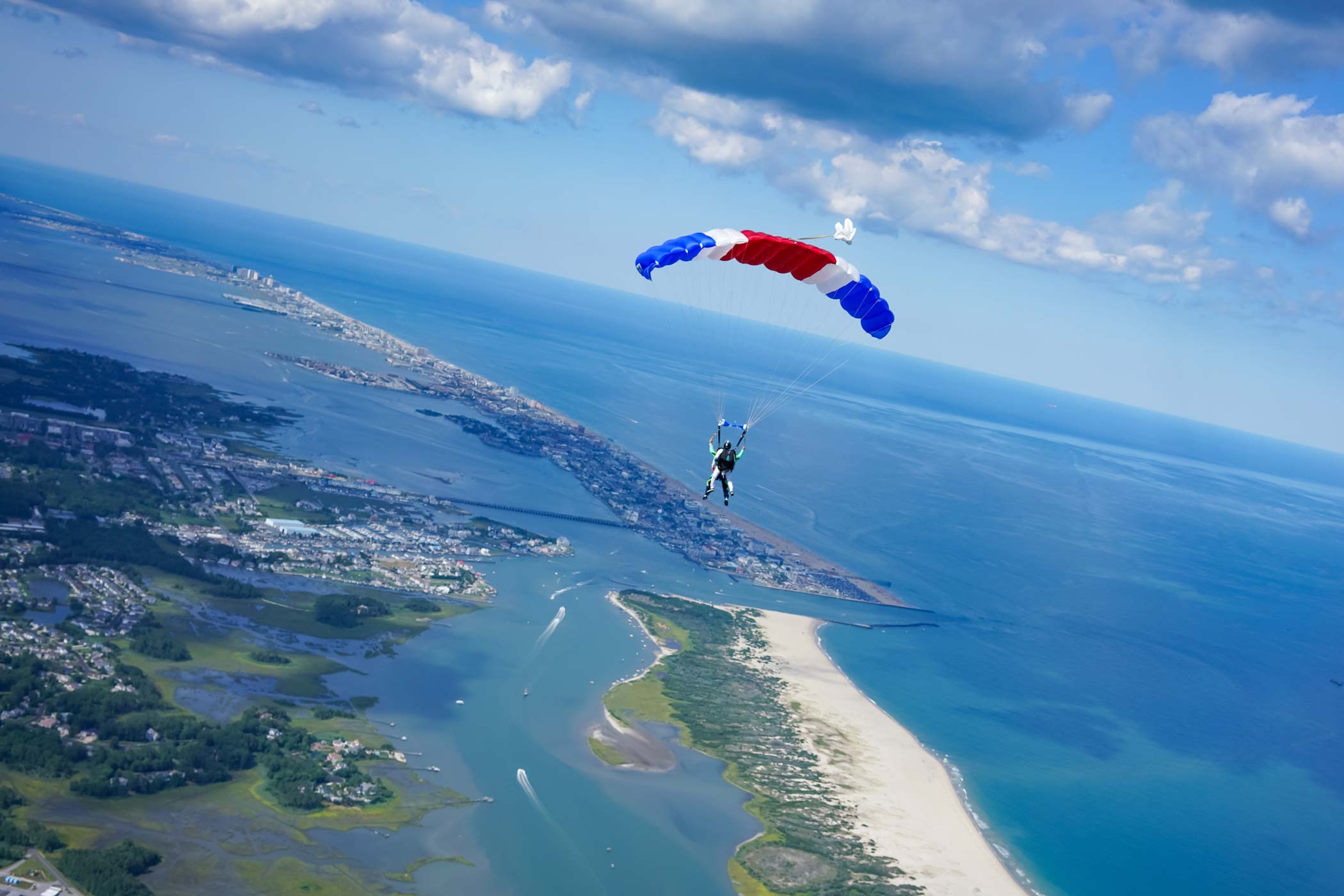
The Origins of Skydiving
When did skydiving begin? The history of skydiving – or the concept of falling from the sky with a parachute-like structure – begins alllllll the way back in the 1100s. There are records of the Chinese using a rigid, umbrella-like system to perform stunts from towers. Would we say this is exactly when skydiving began? Maybe, maybe not. Technically skydiving is defined as: the sport or activity of jumping from an aircraft, freefalling, and landing by parachute.
This idea of falling from a high place and successfully landing back on solid ground has never faded. As we take a look at history we’ll find many who sketched out ideas and some who even attempted these impressive stunts in order to prove their theories.
The History of Skydiving
The skydiving history timeline begins with the invention of the parachute – which was a complicated process that went back and forth for a few hundred years.
The first parachute design is credited to the one and only Leonardo da Vinci, “the father of the parachute.” In 1490, he sketched a pyramid-shaped parachute over a rigid frame in the margin of a notebook with the notation: “If a man is provided with a length of gummed linen cloth with a length of 12 yards on each side and 12 yards high, he can jump from any great height whatsoever without injury.” It was never known if da Vinci’s parachute design was ever built and tested. However, there were rumors of a Fausto Veranzio allegedly jumping from St. Mark’s Campanile in Venice, Italy in 1617.
The First Parachute Jump
It wasn’t until 1797, that the first successful jump in skydiving history was performed by André-Jacques Garnerin – named officially as the first skydiver in the world with more than 200 parachute jumps, including one from 8,000 feet! Garnerin performed the first parachute jump from a hot air balloon that was 3,000 feet high with a silk parachute attached to a gondola in Paris, France. A couple of years after this monumental moment in parachute history, his wife, Jeanne Genevieve Garnerin, would go on to be the first woman to make a parachute jump from 3,000 feet! Wow.
So, who invented skydiving? With all of the skydiving information out there, it’s almost impossible to determine who invented skydiving. We believe skydiving to be an ever-evolving idea that is difficult to credit to just one individual – we like to think of it as a collaborative invention that was developed by centuries of effort. Just like many other historical events, it’s tough to say exactly when, where, how and who invented the parachute or skydiving.
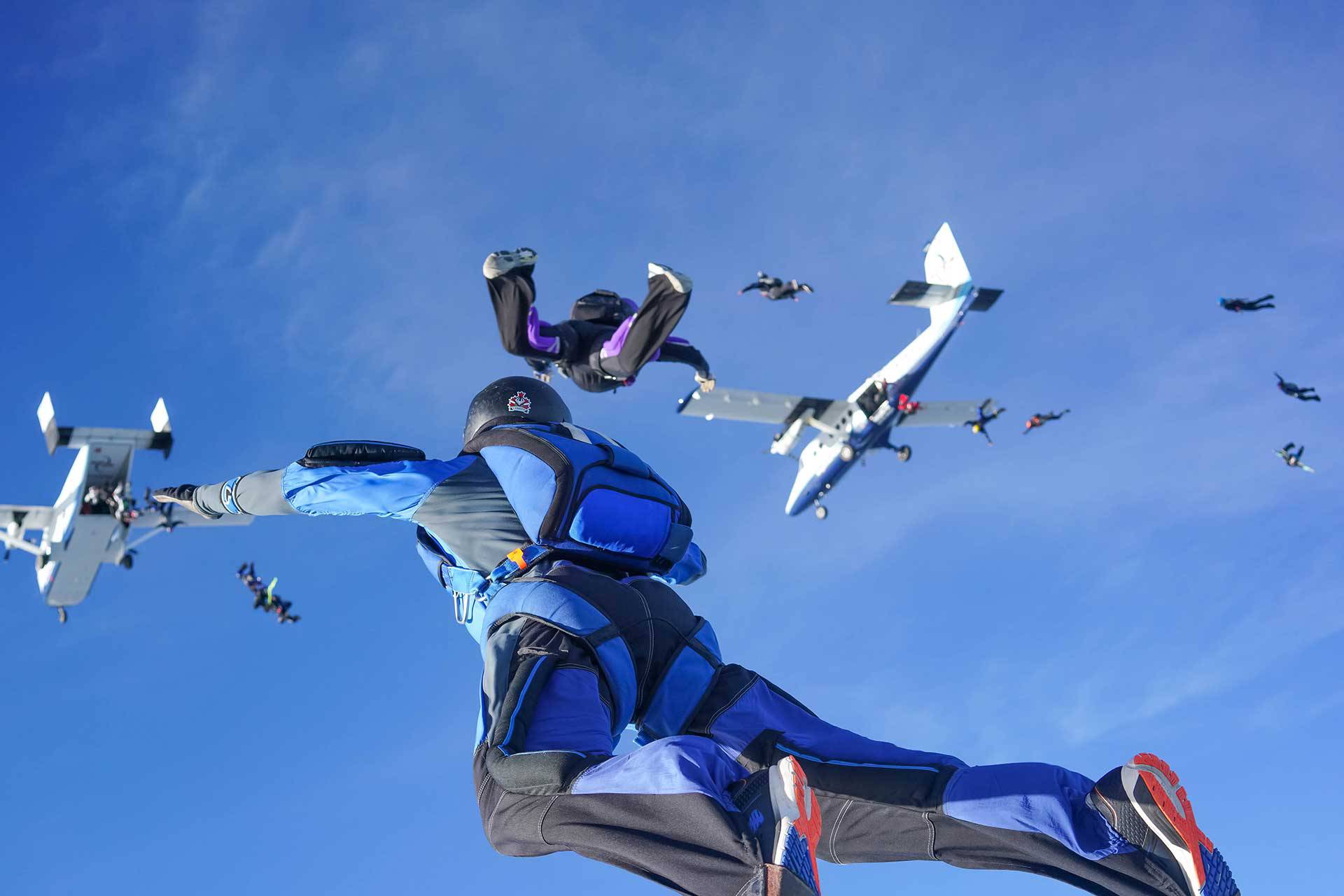
Skydiving History Timeline: Modern Day
Fast-forward to the 1900s when Grant Morton and Albert Berry were both credited with being the first people to jump from an airplane using silk parachutes. Morton jumped from a Wright Model B airplane in Venice Beach, CA, and Berry jumped from an airplane near St. Louis, MO.
Just a few years later, Georgia “Tiny” Broadwick would become the first person to jump freefall by deploying her parachute manually while in freefall as opposed to using a static line procedure. From there, the military would go on to use skydiving as a way to access places that were difficult to get to any other way – a movement which would increase skydiving’s popularity, even after the war.
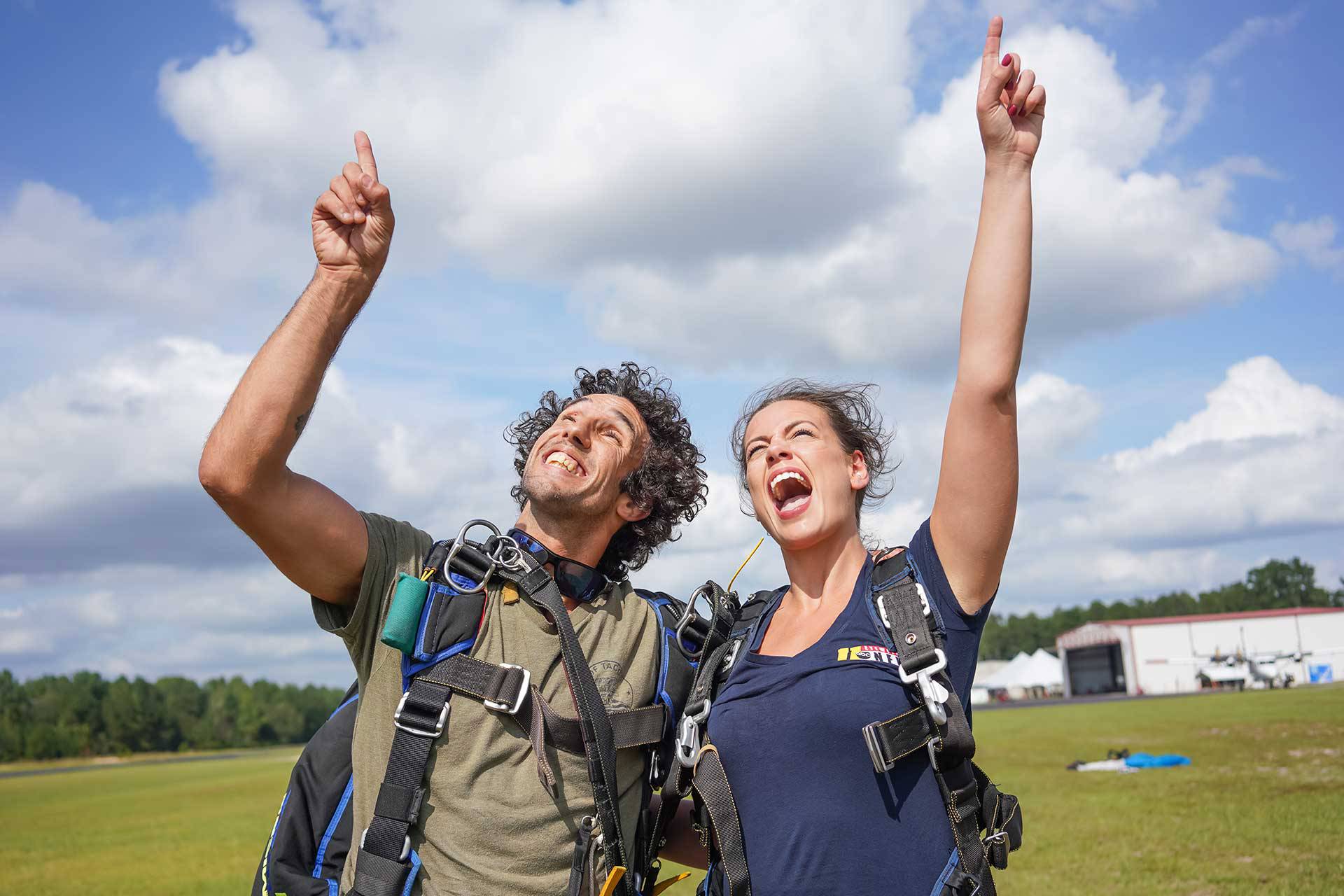
Parachute History Timeline & Technological Advances
When the military began using parachutes, they were round and very difficult to control – making the jumpers basically at mercy of the wind and hard impact from the ground.
In 1962, the first square, ram-air parachute was invented by Domina Jalbert and Paul J. Poppenhager, known as the Jalbert Parafoil. This invention would change the game for millions of skydivers-to-come; they offered greater steerability, making skydiving safer than ever before. These parachutes have become the standards in both recreational and military skydiving.
The design and materials used in modern parachutes have evolved significantly from the early days of silk canopies. Today’s parachutes are predominantly made from high-strength, lightweight materials such as rip-stop nylon and Kevlar, which offer durability and resistance to tearing.
As far as deploying the parachute goes, Charles Broadwick invented static line jumping in 1907 by folding his parachute into a pack that he wore on his back. The parachute would be pulled from the pack by a static line, which would then snap. A year later, Albert Leo Stevens invented the ripcord that would enable the jumper to manually open the parachute.
Significant Equipment Enhancements
As skydivers, we are constantly looking for ways to make skydiving safer, and one of those ways is by perfecting the design of the equipment. A major addition to the skydiving gear is the 3-ring system designed by none other than Bill Booth in 1982. The 3-ring system was designed to serve as the attachment point between the parachute and the container (backpack-looking thing), and was used to easily cut away a faulty parachute to deploy the reserve parachute.
A few years later, the Automatic Activation Device (AAD) was invented by Helmut Cloth. This tiny device acts as an extra back-up system should the jumper not be able to deploy their reserve parachute, for any reason, once they achieve a certain altitude and speed.
The design of reserve parachutes and their containers has also seen major improvements. Reserve parachutes are meticulously engineered to deploy quickly and reliably, even in adverse conditions. The containers that house these parachutes are designed to protect the canopy from damage and ensure a smooth deployment sequence.
The harness system – which secures the parachute to the skydiver – has undergone significant advancements in terms of comfort, durability and safety. Modern harnesses are ergonomically designed to distribute the forces of a hard opening evenly. Adjustable fittings and padding improve comfort, making it easier for skydiving to maintain proper body position during freefall, parachute deployment, and canopy flight.
Altimeters – devices that measure altitude – are a critical component for skydiving safety. Accurate altitude awareness is essential for timely parachute deployment, whether you use an analog, audible, or digital altimeter. Audible altimeters provide an additional layer of safety by emitting audible warning beeps at preset altitudes, alerting you when it’s time to break-off and/or deploy the parachute. With some digital altimeters, skydivers have the option to view logbooks, freefall speeds, and data tracking to help monitor and analyze their jumps more efficiently.
Helmets, goggles, flight suits, wingsuits are all examples of skydiving equipment advancements that have improved our sport and provided options for personal progression.
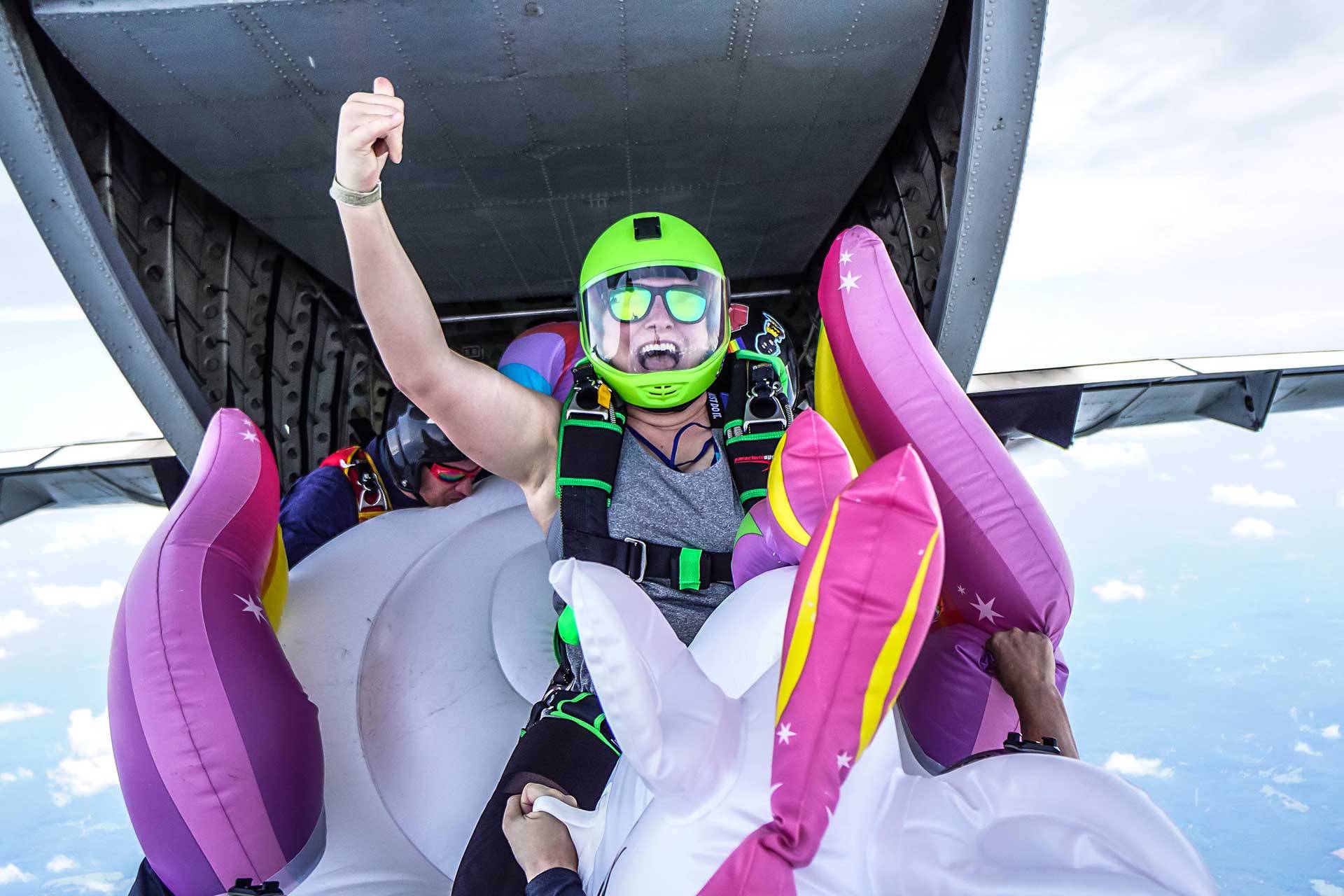
Who Invented Tandem Skydiving?
Tandem skydiving was invented in 1983 by Ted Strong. This innovation revolutionized the sport by making it accessible to beginners who could experience the freedom of flight without taking on the responsibility of operating their own parachute. Tandem skydiving has since become one of the most popular forms of recreational skydiving and is considered the best way to experience skydiving for first-timers. Thank you, Ted!
Ready to experience the thrill of tandem skydiving for yourself? Book your adventure with a dropzone near you! Blue skies.
Categories:
DZ Locator
Find a skydiving center near you.



